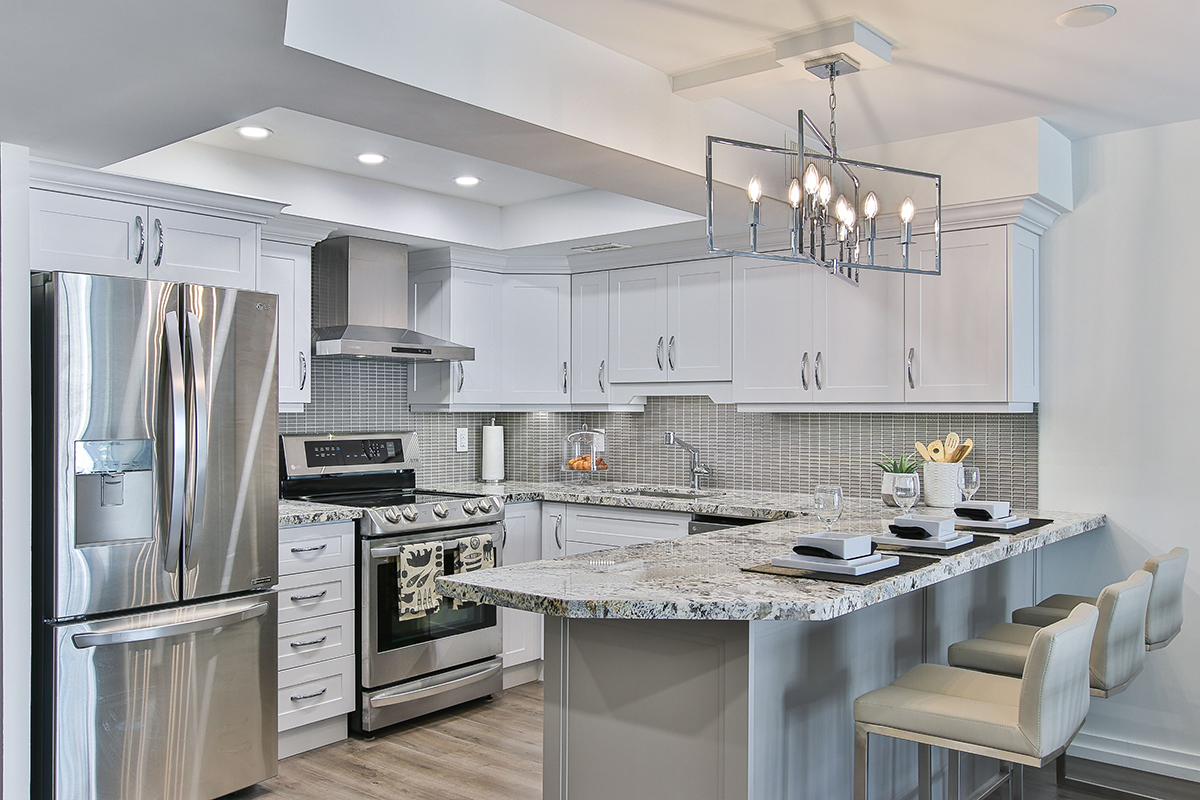Home improvement can be an incredibly rewarding experience, transforming a house into a ideal living space that reflects personal style and boosts functionality. Whether you're looking to update a particular space or embark on a full home renovation, the process offers countless chances for creativity and improvement. Still, navigating the world of remodeling can also be daunting, especially with the wide range of trends, techniques, and budgeting considerations to keep in account.
In this article, we will explore some of the most inspiring remodeling projects and provide actionable insights into preparing your own project. From kitchen and bathroom upgrades to maximizing basement and attic spaces, we will cover essential topics like cost management, choosing between DIY and contracting, and avoiding common mistakes. By highlighting the most recent trends for the upcoming year and sharing budget-friendly tips, we aim to empower you with the skills you need to successfully renovate your home while enhancing its curb appeal and boosting its value. Let’s dive into the before and after stories that illustrate the magic of home remodeling and encourage your next project.
Budget-Friendly Remodeling Tips
As you planning a house renovation, establishing a realistic budget is important. Begin by determining which sections of your house you want to upgrade and order them based on your needs and way of living. This will help you allocate your finances more successfully. Contemplate using a combination of premium and affordable materials to realize a great aesthetic without breaking the bank. Investigate local suppliers and take advantage of promotions, bargains, and including closeout deals to stretch your resources even more.
An additional efficient strategy is to concentrate on DIY projects that align with your abilities. Easy tasks like painting, adding modern lights, or updating cabinetry can noticeably upgrade your room while maintaining costs down. There are numerous of online materials and tutorials that can guide you through these projects. Nonetheless, it's important to recognize your capabilities; if a assignment seems too difficult or time-consuming, it may be worth contracting a specialist to guarantee quality and prevent costly errors.
In conclusion, think about making your renovation more eco-friendly. Eco-friendly choices can lead to long-term advantages on utility costs, and many sustainable materials and options aren't as expensive as they look. Search for energy-efficient appliances, smart home technology, and sustainable materials that often come with financial incentives or tax incentives. By including these aspects into your project, you not just save money at the start but also create a more effective and green home for the times ahead.
Trends and Enhancements in Home Remodeling
Home remodeling constantly changes, showing transformations in styling preferences, technology, and eco-friendliness. In 2024, one of the most significant trends is the transition toward green materials and practices. Homeowners are increasingly looking for means to reduce their environmental impact, integrating sustainable options like repurposed timber, upcycled products, and eco-conscious appliances into their renovations. As a result, home improvement projects frequently feature a greater attention on green construction methods, encouraging a more wholesome living environment.

Another prominent trend is the integration of intelligent home devices into renovation plans. Furnishings and devices that offer intelligent connectivity are currently highly desirable, permitting homeowners to adjust lighting, climate, safety, and even entertainment with a tap or voice command. Smart home features not only enhance convenience but also enhance energy efficiency, which can yield significant cost reductions over time. From automated temperature controls to intelligent lighting systems, these innovations are transforming how we engage with our homes.
Lastly, open concepts stay popular among homeowners looking to design a more spacious and inviting atmosphere. However, the trend is shifting to include distinct areas within these shared areas. Designers are concentrating on creating functional zones that cater to specific activities, such as cooking, dining, and relaxation. This approach not only enhances usability but also enables greater customization in design, merging style and practicality in modern home remodeling.
Maximizing Area and Efficiency
While starting a home remodel, one of the key goals should be to maximize both room and usability. This is especially important in areas like culinary areas and restrooms, where effective design can significantly enhance functionality. Consider including clever storage solutions such as slide-out cabinets, beneath-sink organizers, and built-in shelving to minimize clutter and capitalize on every inch. Concentrating on layout and flow, you can create a setting that feels more spacious and more welcoming, boosting the overall enjoyment of your home.
A further effective strategy for boosting functionality is to consider multipurpose spaces. For example, converting an unused basement into a versatile living area can provide a rec room, home office, or guest suite all in one. In the living room, furniture that can be readily rearranged or items with dual functions—like ottomans that provide storage—can keep your home flexible and adjustable to your needs. This approach not only enhances how you use your home but also adds value and pleasure.
Additionally, integrating up-to-date technology can significantly elevate the functionality of your remodel. Smart home features that facilitate automation of lighting, climate control, and security systems help create a more productive living environment. Choosing eco-friendly upgrades that reduce energy consumption will also enhance sustainability, making your environment not only more functional but also attentive to environmental effects. By emphasizing look these up and technology, you can achieve a home that meets your needs while feeling stylish and up-to-date.
